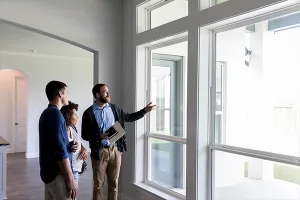In a nation based on a constitution that guarantees equality for all, decades of planning and land-use policy has created inequity.
Everything from single-family zoning with large minimum lot sizes that made homeownership impossible for many people of color, to shameful, insidious practices such as redlining lending in predominantly African American communities, has widened the chasm between haves and have nots.

Even the automobile — that great tool for middle-class community work, expanding suburban homebuilding and vastly growing tourism — was weaponized against minority communities. Hundreds of freeways, that almost never tore through places with a white majority, cut through African American neighborhoods, destroying communities. These planning decisions robbed people of equity in homes and businesses that were undervalued, taken by eminent domain and razed for freeways.
Even supposedly well-intended Model Cities and other urban renewal programs of the 1960s and 1970s replaced perfectly livable row houses, homes with large porches and other hallmarks of the African community, with soulless, oft-isolated apartment high rises that were quickly derided as “the projects.”
A history of well-meaning planners introducing their own bias and paternalism — feeling they knew what was best for rebuilding community without ever taking the time to truly grasp the needs, traditions, cultures, diversity and unique housing patterns — has haunted countless minority communities.
This year has been like no other. Mass protests have underscored the endless inequity and brutality killing, injuring and forever damaging people of color. The COVID-19 pandemic has exposed vast inequities in terms of higher infection rates with lower access to crucial health care, as well as higher incidences of unemployment exacerbated by a frayed and shrinking safety net. Also, 2020 marked the 30th anniversary of the Americans with Disabilities Act — a sad fact for those who believed 30 years of federal civil rights protection would result in something better than people with disabilities hunting for housing and finding less than one percent of it is move-in ready accessible.
Engage stakeholders before a scope of work is even contemplated.
This article is an acknowledgment of exclusionary policies — many still in practice — that have prevented tens of millions from accessing the American Dream and quality of life that all deserve. Its diverse and expert voices aim to share best practices that will create approaches, methodologies, policies, practices, codes and laws that will level the playing field.
“The disparate impact across planning outcomes reflecting biases has a storied history across American cities. There are examples that range from the removal or denial of parks and open space equitably throughout cities with notable deficits occurring in communities of color and lower-income cities,” said William A. Gilchrist, FAIA, NOMA, director of the city of Oakland’s Planning and Building department.
“While the planning and urban design professions are recognizing the role they have played in much of the inequity in the urban landscape, these disciplines are also in key positions in the way they apply their procedural and technical skills to redress many actual conditions through equitable outcomes, as well as bringing a more inclusive process of engagement that should characterize all planning initiatives.”
Engagement
Gilchrist said the most effective way to ensure an outcome that is inclusive across community is to engage stakeholders before a scope of work is even contemplated. The greatest opportunity to ensure a robust, inclusive outcome is to define that opportunity correctly and equitably. He urged planners to communicate frequently with social, religious, cultural or business and neighborhood forums within a community.
“The content and the connectivity around a community’s inclusion lives or dies with the relationships established and ongoing through outreach and response,” Gilchrist said. “It is also critical for the planning professional to find some means of vetting the proposed scope of work for a planning initiative with the community stakeholders before it is issued as a Request for Qualifications or Proposals. While this step may inevitably add time to procurement of services or project start, it remains one of the best ways to ensure participation, credibility, and service with community.”
He cited the City Center Master Plan Update for the city of Birmingham, Ala., as a prime example of direct participation of neighborhoods that spanned a wide range of income and race. He said a positive outcome was Railroad Park, which created a “people’s park” in a city that had suffered a history of disparity around use and location of public space.
Gilchrist said when communities that have suffered historic inequity demand a direct hand in charting their futures, early engagement brings communities on board not simply as stakeholders, but as active partners. He noted this “is no longer one approach for redressing those inequities — it is the only approach.”
The Birmingham Association of REALTORS® (BAR), supported the master plan and continues to work with the city’s mayor and other elected officials on issues of community, development, planning, land use, business and urban living.
“We are actively involved in restoring the value that was taken away by redlining,” said William Baylor, vice president of government affairs for BAR. “REALTORS® are natural canvassers. They are in the neighborhoods, they see trends — positive and negative — so it’s natural for them to build relationships with mayors, city managers and other leaders to address local issues.”
BAR is addressing environmental justice by working with a Jefferson County commissioner to build new, ADA-compliant, three-bedroom houses that will be worth about $100,000, but sold to qualifying families for around $50,000. Along with providing safe, affordable housing, the initiative will help build equity in greater Birmingham when it is formally defined and launched in 2021.
“REALTORS® advocate for property rights — not just because it adds value to the [real estate] industry, but also because it adds value to the community. BAR also uses a lot of NAR tools for community building,” he said.
Learn from the Past
The American Planning Association’s (APA) Planning for Equity Policy Guide was approved by its board and published in April 2019, before the wide-ranging rallies for social justice and disparate impact of the pandemic became headline news in 2020.
Created by a diverse base of APA members, the first page of the 30-page document takes a head-on approach toward acknowledging the profession’s history with inequity:
“It is important for planners to recognize the past and present role the planning profession has played in creating and perpetuating discriminatory practices against communities of color, the LGBTQ communities, women, and persons with disabilities. For example, zoning, which is intended to separate incompatible land uses, has also been used to exclude certain population groups from single-family neighborhoods and to exclude multifamily rental housing from neighborhoods with better access to jobs, transit, and amenities.”
“Planners are uniquely positioned to make a difference. They are out in the communities. They can look at housing, transportation, health, environmental justice — and set policies that create quality of life for everyone equally,” said Susan Wood, AICP, one of the guide’s authors and co-chair of the project that produced its tools to address inequities and influence decision makers. The pandemic has underscored the need. People who can least afford to shoulder the burden have been the most negatively impacted. In a marginalized community, if you don’t have access to healthy living, transportation, doctors — you can die.”
For the Good of the Whole Community
The APA guide is filled with concrete action steps to create more equitable policy. Wood said zoning decisions tend to be based on creating individual wealth vs. a holistic gain for the community. She said planners have an obligation to inform city officials of all impacts and consequences of land-use decisions.
“It has to do with empathy and humanity — we need to have a fully functioning community,” said Wood, a planning project manager with the Regional Transportation District in Denver. “The intent behind the guide is to address all who are underserved — people of color, of low income, with mobility issues … by creating policies for inclusive growth and equitable economic distribution.”
When it comes to planning inequities for people with disabilities, HUD surveys have documented that fewer than one percent of all housing is move-in ready for wheelchair users. Virtually all of that tiny one percent is new build multifamily housing. Fewer than five percent of all housing is even moderately move-in ready for people with physical disabilities who do not use a wheelchair full-time.
“Much like affordable housing, you give developers an economic incentive to get them to build accessible units — increasing density or expediting permitting — if they provide more universally accessible units,” says Mark Thompson, AIA, senior associate director of architecture for Paralyzed Veterans of America.
Planners are uniquely positioned to make a difference.
“More housing for people with disabilities creates a more diverse, stronger community. Twenty percent of the population will have some kind of disability and the majority of those impact mobility. Designing for universal access is simply meeting the market demand,” said Thompson, who believes office buildings left vacant by the work-from-home trend will be prime for converting to accessible housing located close to transit, jobs, healthcare and education.
Thompson said planners should build support for accessible housing by educating communities and builders that the cost of making a home accessible from the start is only five to 10 percent more expensive than a non-accessible dwelling. Retrofitting is where high costs come in. But wider doorways, roll-in showers and accessible kitchens do not drive up costs significantly if incorporated into design from day one.
“I have had many conversations with municipalities, stakeholders, builders, and developers about Universal Design, visitability, ADA for single-family residential, and whether a component of accessibility should be mandated. As a broad statement, when you prescribe something, you take away a piece of its soul,” said Jeffrey DeMure AIA, author of “Livable Design: From Commodity to Community with Affordable, Adaptable, Beautiful Home Design.”
Livable design advocates for flexible, accessible, age-in-place housing with stepless entries; wider doors and hallways; kitchen convenience and functionality improved with multi-height work surfaces and ample space to move around easily; a ground floor bathroom with reinforced walls and towel bars; and a bedroom on the ground floor.
“I believe the best way to make the most significant impact in residential home design is for municipalities to incentivize builders to incorporate Livable Design into their homes through fee reductions, fast-tracking projects, or a combination of both. This approach will motivate builders to seek creative solutions and deliver a better result for the community. Win-win,” said DeMure, president and CEO of Jeffrey Demure+Associates Architects and Planners in Granite Bay, Calif.
The Equity Lens
Charles T. Brown, MPA, senior researcher at the Alan M. Voorhees Transportation Center at Rutgers University, is committed to creating equitable cities.
“It’s important that all parties be more knowledgeable of the historic land-use and transportation issues that have disproportionately impacted racial and ethnic minorities and low-economic communities,” he said. “The environmental justice movement demands that we ensure the full and fair participation by all potentially affected communities in our decision-making process.
Brown urges planning professionals to evaluate projects and plans through the lens of equity. He defined equity as the presence of justice and fairness within the procedures and processes by an institution. Based on adapting forms of justice developed by Setha Low, director of the Public Space Research Group at the City University of New York, Brown has detailed how the pursuit of justice should impact planning:
Distributive Justice. We must ask who has physical access to that street, that park, that trail, that building? That applies to pedestrians, persons with disabilities, the modes in which a person can access a street or trail. It examines public transit vs. driving disparities. It evaluates the impact of an auto-centric environment. We must ensure that transportation includes [space and safety] for bikes, people with disabilities, micro-mobility, and pedestrians.
Procedural justice. This is about ensuring the full and fair participation. We must ask questions, such as: Who has influence over the design and the programming of these networks? What’s the power dynamic — not only historically but presently?
Interactional justice. This gets at concerns around what makes people feel welcome or unwanted in a space. If we are to pursue interactional justice, we must make sure all people feel welcome. This touches on every aspect of identity, including but not limited to, sexual orientation, race, religion, and disability.
Representational justice. The key question is: do people feel like their experience and history is represented in the space? In many planning activities in hot real estate markets, there is a growing concern around gentrification and displacement. One of the ways to mitigate these concerns about cultural erasure is representational justice. Make sure people’s history is represented in the new space, through development or redevelopment. Many public spaces have monuments and plaques detailing the achievements of white people. We need to have more inclusive plaques and markers that talk about the history of the place made by all people.
Livable design advocates for flexible, accessible, age-in-place housing.
“I would add an element of planning focused on creating places that people care about,” Brown said. “Look at how well it’s maintained by stakeholders, local government, or volunteers. The care of a space represents its respect, its success and its dignity. Are we creating spaces with respect for humanity and environment — regardless of people’s social identities?”
Throw Out Old Policies
Thomas Barrie, professor of architecture at NC State University and director of the Affordable Housing and Sustainable Communities Initiative, published a powerful op-ed in the Charlotte Observer in June titled: “To fight racism, throw out neighborhood zoning laws that lead to segregated housing.” He is interested in cracking the code that gives the reason behind why places look like they do and why disparity is built into the system.
“North Carolina has all sorts of laws, put in for dubious reasons, that inhibit or greatly limit affordable housing,” he said. “We can’t have inclusionary zoning or rent control. There are limits on cities creating their own housing laws, state law that limits the ability to create form-based codes. I’m an educator. It is my role to write op-eds and inform people about laws that limit justice, inclusion and equity.”
Barrie said some states and cities — Oregon, Minneapolis, Denver and Grand Rapids — have eliminated exclusive single-family zoning or are moving toward that. He supports efforts to allow more diverse and dense housing.
Minneapolis’ comprehensive 2040 Plan addresses affordable housing issues by allowing greater density. In late 2019, the Minneapolis City Council voted to allow duplexes and triplexes in low-density neighborhoods, which eliminated the single-family zoning codes that had been in place for decades. According to Eric Myers, director of government affairs for the Minneapolis Area REALTORS®, “REALTORS® believe the city’s 2040 Plan and the city council’s Vision on Upzoning positioned Minneapolis on the leading edge of a unique approach to addressing complex housing issues. We recognized their approach was truly innovative but the execution of the policy has been lackluster at best.
“REALTORS® and developers are ready to embrace the city’s vision and help bring triplex units to the market place, but only the top-line policy was changed. Additional changes to heights, dimensional standards, setbacks, floor area ratios, total site coverage, and the combining of adjoining lots will likely need to be addressed before further progress on building of triplexes can be fully realized.”
Monica Guerra, Ph.D., a senior at Raimi + Associates in Riverside Calif., contributed to the APA’s planning equity guide.
“I’d start by acknowledging that the most egregious impacts, such as that of redlining, have not been done away,” she said, outlining her best practices for equity. “The reason such inequalities exist in parks, transit systems, and playgrounds in many communities is because of these impacts. It’s a mistake to separate the built environment from the social issues present in a community.”
Guerra said addressing planning flaws requires that planners understand:
- The many ripple effects of racist and inequitable planning practices;
- That planning expertise offers important technical knowledge, but it should not outweigh the local, lived expertise of community members; and
- Planners must look beyond the built environment as the outcome of design. That it requires engaging in meaningful conversations across disciplines to understand the deep social impacts of inequality and a path forward that centers on both place and community.
“New growth practices need to consider who they are accountable to — rather than focus on financial return to investment and highest and best use of land. There is an opportunity to assess the broader impacts to the community — environmental, social, economic, etc.,” she said. “If we look at the impacts of existing growth policy — often favoring big box, chains, national retailers/hotels/services, and other similar types of development — the costs of supporting infrastructure and long-term sustainability far outweigh the benefits to community. In order to support mom and pops/local/diverse businesses, it’s imperative that local planning decisions not only prioritize these types of developments, but also support their success.”
Connectivity
Antoine M. Thompson is executive director of the National Association of Real Estate Brokers (NAREB), the largest organization of African American real estate professionals in the United States. He said planning for equity can be as simple as placing caps over expressways or removing them — to reconnect communities separated by such major transportation projects that almost always were built through African American neighborhoods.
Thompson, who served as a state legislator in Buffalo, N.Y., said the planning and zoning departments of most American cities could benefit from having more diverse staffers, noting a staff that lacks diversity may have good intentions, but it’s likely to make paternal, detrimental decisions. Another remedy is making sure stakeholders drive the planning process, not just developers.
Thompson said too many cities dedicate most of their millions in infrastructure to mega developments or new neighborhoods, instead of investing in maintaining core neighborhoods.
“Look at the demolition budget vs. housing rehab dollars. Many cities spend 10 to 1 on knocking down houses instead of spending a little to help people on upkeep,” he said. “People get written up for code violations. It’s hard to get a mortgage or rehab loan, so it drives people to walk away from their homes. That makes it a market for speculators who don’t have the same commitment to the neighborhood. In minority neighborhoods, we need comprehensive, sustainable community strategies that rehab houses; stabilize mortgages; fix curbs and sidewalks; provide convenient transit; upgrade water and sewer lines; maintain parks and streetscapes; and build arts and cultural facilities.”
Thompson said NAREB continues to encourage pathways to homeownership while combating the horrendous impact of historic redlining.
“Redlining still takes place today, as African Americans are in lending deserts. In some communities, they are twice as likely to be turned down for a mortgage as a non-African American,” he said. “We promote democracy in housing. Lawmakers need to pay attention to lending patterns and trends. Most have no idea what lending rates are, broken down by racial demographics.”
A New Vision
The Columbus Association of REALTORS® (CAR) secured a smart growth grant to match other funding to support a $50,000 study to equitably build out the Central Ohio Greenways Regional Trail Vision. The planning effort acknowledges that many Central Ohio low-income and minority neighborhoods have traditionally been underserved and lack access to safe transportation and recreation options. With equity for all, benefits would include cleaner environment, health cost savings and support of a transportation mode-shift away from car dependency.
“Serving all areas, communities and people to ensure equal access to a healthier, safer and environmentally friendly transportation options are a few of our top priorities. Central Ohio is known for the “Columbus Way,” public private partnerships serving the greater good of our communities and providing equal access to all. We are proud of our work and look forward to the implementation phases of building additional trails. It goes without saying, we affirm our commitment to Fair Housing but we are also committed to equality and serving all neighborhoods,” said Andy Mills, 2020 Columbus REALTORS® president.
George Homewood is the planning director for Norfolk, Va., and served on the task force that created the APA equity policy guide.

“Unfortunately, a legacy that planners have to face up to — one of the key components to the equity policy guide — is the tools of our profession got co-opted and used to divide rather than bring together,” Homewood said. “When properties were acquired for highways, African American businesses and houses were taken. These were properties folks owned. Not only were properties taken, to further compound the crime, they were given a discounted, unfair market value. They were not paid what would allow them to replace their business or living conditions.
“Cities planning for highways said [African American communities] were blight, so they were not given anything close to replacement value. Their ownership was taken from them and they became renters,” he continued. “The one thing we know is the greatest source of integrational wealth transfer is homeownership. Even in gentrification, if the businesses and houses are owner occupied, everyone reaps the benefits. When bad policies took away ownership and made people renters, now a gentrifying neighborhood displaces renters and [deepens the wounds from property takings done generations ago].”
Homewood said planners must get past the paternalism of the Great Society and Model Cities movements that whether well-intended or not, added to inequity rather than resolving it. He urged planners to get past the “lunacy” of zoning processes that are not inclusive and stand in the way of building communities that are diverse, walkable, bikeable, livable and mixed [incomes and uses].
“Planners are the guardians of the future and we have an ethical obligation to go out of our way to make sure voices traditionally not heard have a voice,’ he said. “We are the ones who are professionally trained and emotionally prepared to imagine our communities in 5, 10, 20, 100 years. In terms of climate change, civil unrest, wild fires, pandemics — we are most capable of addressing social and environmental issues, and we must ensure we do it in a way that maximizes the health, safety and economic wellbeing of the entire community.”











